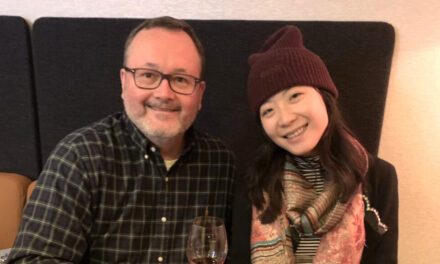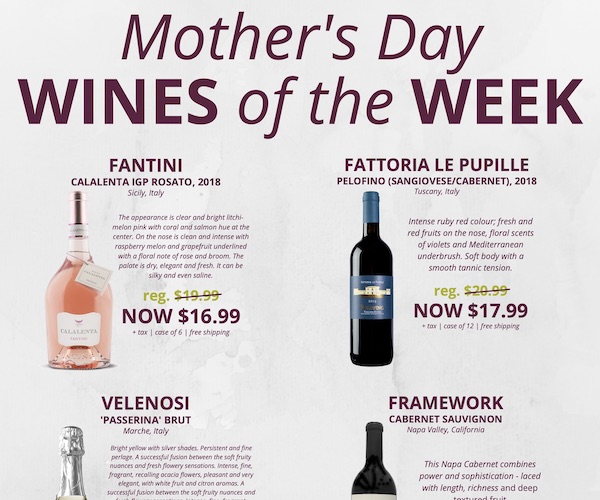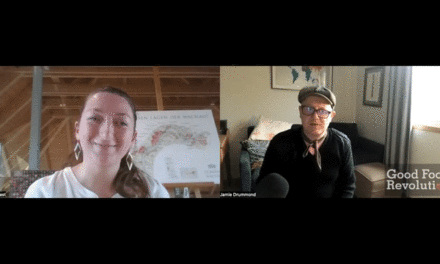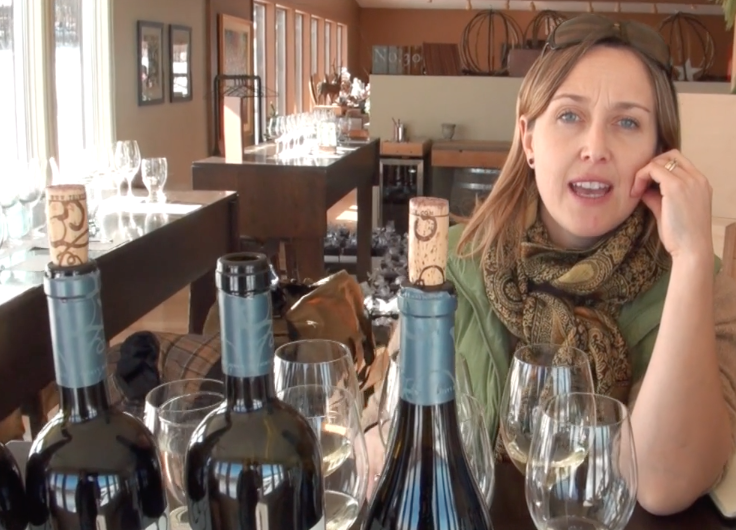At the VieVinum Thermenregion masterclass presented by the lovely German-born/London-based Master of Wine Anne Krebiehl
Challop (noun) – plural : challops
Pronounced “chah-lop’
1: A portmanteau term for a challenging opinion.
2: An irregularly published column on website Good Food Revolution.
You’d be somewhat forgiven for being unfamiliar with the Zierfandler grape.
It’s certainly not as well known nor as widely planted as Austria’s signature grape, Grüner Veltliner, and it’s certainly nowhere near as fêted as the noble Riesling. Saying all that, I firmly believe that Zierfandler has the potential to stand up there with both of those as one of Austria’s finest grapes. Sacrilege! I hear you cry in unison, but please hear me out.
Last month at VieVinum, at a Thermenregion masterclass graciously hosted by Master of Wine Anne Krebiehl, a group of us tasted through a range of wines from the region, including some stunning Zierfandlers. It’s clear that this grape has a solid fan base given the response to the session’s wines. At this tasting, I also discovered that Thermenregion makes some glorious Pinot Noirs, but that’s a story for another day.
Also known locally as Spätrot, as the side of the grapes facing the sun turns red during ripening, the autochthonous Zierfandler is thought to be a natural crossing between the virile Roter Veltliner (no relation to Grüner) and perhaps Jura’s Savagnin. The grape is planted almost exclusively in Austria’s Thermenregion, with approximately 20 hectares next door in Hungary. These scant 60 hectares of Austrian vines are responsible for some of the most thrilling, enchanting, and unique white wines I have ever tasted.
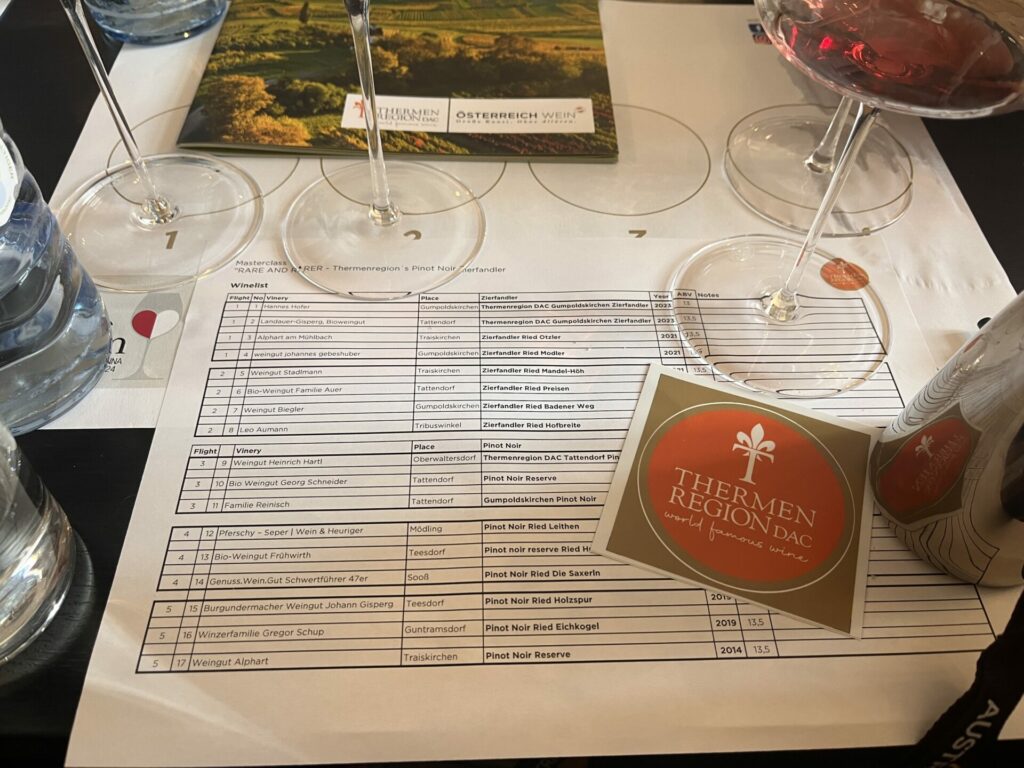
The list of wines for the VieVinum Thermenregion masterclass presented by Master of Wine Anne Krebiehl
Speaking of unique, the Thermenregion growing area, located around an hour south of Vienna, is just that. The name, Thermenregion, refers to the area’s thermal springs and spas based around the geological fault line running diagonally between the Vienna Basin and the northern limestone Alps, allowing heated subterranean water to reach the earth’s surface. These healing waters have been renowned since Roman times. Prior to this, some 2,400 years ago, the Celts had already recognised the region as one with advantageous conditions for grape cultivation. Although wine culture is deeply ingrained in Thermenregion, for much of history, these wines were only enjoyed locally. In 1389 the region’s wines were recognised by Duke Albrecht II, granting any grape growing farmer the right to sell wine they had made themselves.
Despite all of this local consumption, I feel it is integral to understand that the wines of this region had considerable standing throughout the 16th and 17th centuries, with the wines of the district of Gumpoldskirchen being famed throughout the Austro-Hungarian empire and beyond. In those days before the introduction of refined sugar, the sweet Zierfandler/Rotgipfler wines of Gumpoldskirchen were highly prized.
Later in the 18th century, Joseph II issued the famed Imperial Decree of 1784, allowing anyone in Thermenregion to sell their food, wine, and food they had grown/made themselves at any time of the year and with their own pricing, thus putting the region at the very heart of Austrian Heuriger culture.
In the north of the region, the soils on the slopes of the Anninger mountain are predominantly brown earth with a fair bit of shell limestone, while those soils further south are shallow layers of black earth covering Ice Age limestone gravels. The single vineyards (Rieds) on the upper slopes of Anninger are covered with gravels and conglomerates, while those on the lower slopes tend towards finer-grained sediments and shell-rich limestones. The proliferation of limestone and dolomite naturally lends itself to the cultivation of Pinot-related varieties, and hence St. Laurent, Rotgipfler, and, for me, the real star of the show, Zierfandler, flourish here; the middle-to-late-ripening aspect of both Rotgipfler and Zierfandler is never an issue.
The climate is a combination of Lower Austrian coolness combined with Pannonian eastern heat. Keen observers will also note that Thermenregion is positioned in that sweet spot for viticulture between 47 and 48 degrees latitude.
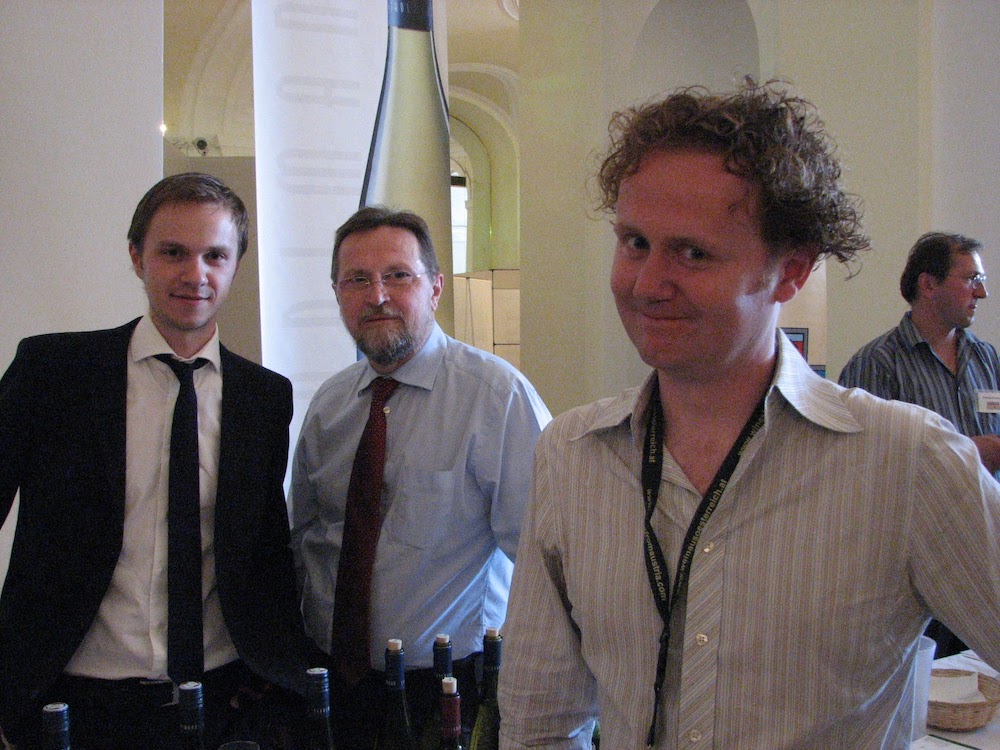
GFR’s Jamie Drummond and winemaker Bernhard Stadlmann (and father!) at VieVinum, Vienna circa June 2008. Such youth and innocence.
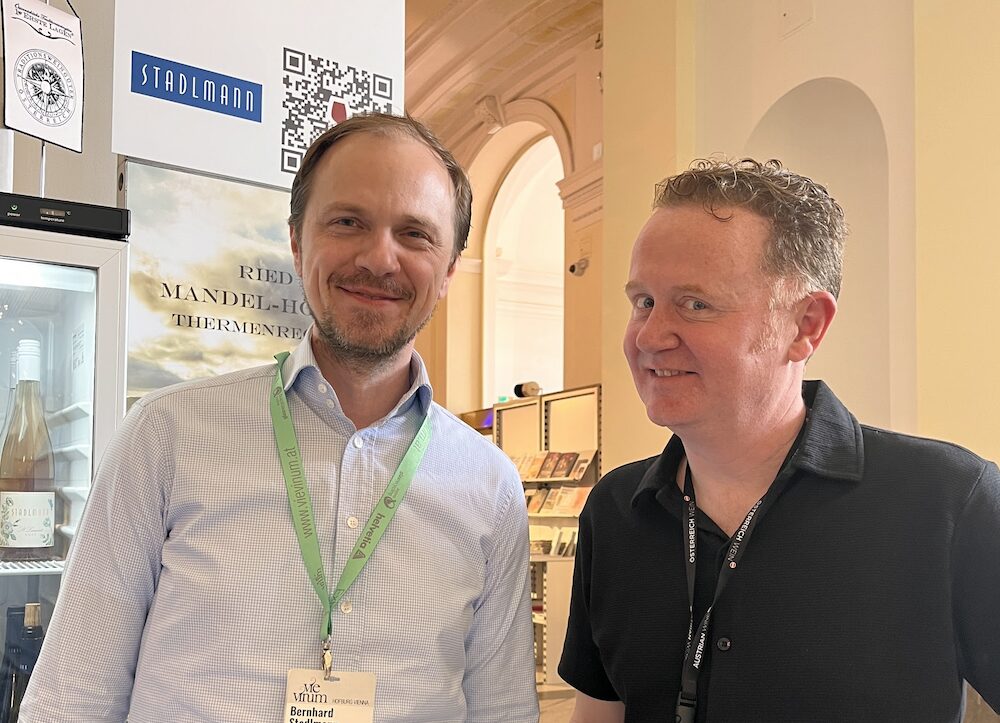
Winemaker Bernhard Stadlmann and GFR’s Jamie Drummond 16 years later at VieVinum 2024, both looking as if they have had many a glass of top-notch Zierfandler in the intervening years.
My very first encounter with the Zierfandler grape must have been back in around 2006 or thereabouts, when I was still purchasing wines for Jamie Kennedy Wine Bar on Church Street, Toronto. An importer, who has now seemingly vanished into thin air, was familiar with my fascination for Austrian wines and decided to taste me on a producer he was importing from a region I wasn’t at all familiar with.
The region in question turned out to be Thermenregion, the producer Weingut Stadlmann, and I swiftly fell for these enchanting wines, placing a sizeable private order of a number of their wines and having Canada-wide exclusivity at the time. I can still vividly remember Terroir’s Paul Greico popping by from New York and haranguing me in his unique, inimitable fashion as to how I had gotten my hands upon these lesser-spotted treasures.
After a staff training session, the servers were so impressed they sold out my entire allocation by the glass in a matter of weeks. In hindsight, I feel a little naive, as this was akin to infanticide, with these wines having the inherent ability to age and evolve for decades.
While all of Stadlmann’s wines impressed, it was their Zierfandler wines that really stood out for me. There was something so special, so unique, about these high-acid, full-bodied, gorgeously textured, and extract-rich bottlings that simply enchanted my palate.
And that rings true to this very day. While I absolutely adore so many of the “Cru” Grüners and Rieslings of Wachau, Kamptal, Wagram, and Kremstal, there’s something different, something so utterly captivating about the beguilingly subtle tropical, stone-fruit, citrus aromatics, the impressively architectural structure, the generously expansive mouthfeel, the saline, chalk-like minerality, and the unique vinous otherworldliness of the very best Zierfandlers that really sets them apart for me.
Having run into young winemaker Bernard Stadlmann a couple of times over my visits to Vienna’s marvellous VieVinum, tasting through his simply wonderful wines every time, I thought it only right that I’d ask him for his take on this grape, especially seeing as they are widely viewed as the top producer of this rare indigenous variety.
Given his authority on the subject matter, I’ll leave the last word to him and rest my case.
“Zierfandler combines the elements of power and elegance in noble wines with great tension. The wines precisely translate the calcareous terroir along the hill slopes and have proven to develop with energetic persistence on the bottle. It’s discreet perfume and the deep layered texture is only gradually released and invites to discover more of its origin. Like other late-ripening grape varieties, Zierfandler maintains a good acid structure and cumulates all aspects of the season.” – Bernhard Stadlmann, Weingut Stadlmann
And for some bonus background context, here’s my interview with him from way back in 2008:



